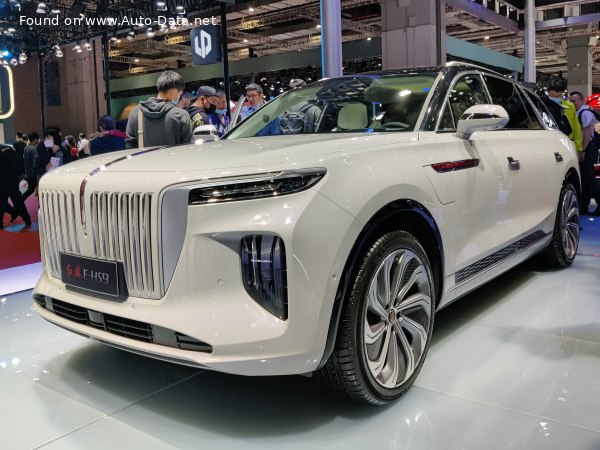Albanian Minerals CEO Sahit Muja emphasizes that the success of the green transition is intricately tied to the availability of minerals, necessitating innovation and the utilization of cutting-edge tools. Enhancing geology and mineral discovery involves a strategic integration of science, technology, and artificial intelligence (AI). Here are pivotal methods to elevate mineral exploration through AI and technology:
1. Remote Sensing and Satellite Imagery:
-
- Leverage high-resolution satellite imagery and advanced remote sensing technologies for the identification of geological features and anomalies.
- Apply AI algorithms to process extensive datasets, extracting invaluable information concerning potential mineral deposits
- Geophysical Surveys:
- Implement state-of-the-art geophysical techniques, including airborne or ground-based surveys, to detect subsurface structures.
- Employ AI algorithms for the interpretation of geophysical data, enhancing accuracy in identifying potential mineralization.
- Machine Learning for Data Analysis:
- Utilize machine learning algorithms for the analysis of geological and geochemical datasets.
- Train models to recognize patterns associated with known mineral deposits, facilitating the identification of similar patterns in unexplored areas.
- Data Integration and GIS:
- Integrate geological, geochemical, geophysical, and remote sensing data into a Geographic Information System (GIS).
- Utilize AI for the analysis and visualization of integrated data, pinpointing prospective areas for further exploration.
- Drone Technology:
- Deploy drones for high-resolution aerial surveys, enabling detailed mapping of terrain and geological formations.
- Employ AI for automated image analysis, expediting the identification of geological features.
- Natural Language Processing (NLP):
- Apply NLP techniques to analyze scientific literature, exploration reports, and historical data.
- Extract valuable insights, trends, and potential target areas from a vast amount of textual information.
- Mineralogy and Spectroscopy:
- Utilize advanced mineralogy techniques, such as hyperspectral imaging and spectroscopy, to remotely identify mineral compositions.
- Apply AI for real-time analysis and interpretation of mineralogical data.
- 3D Geological Modeling:
- Develop 3D geological models using AI algorithms to integrate diverse geological information.
- Simulate and visualize subsurface structures to identify potential mineral deposits.
- Automated Drilling and Sampling:
- Implement autonomous drilling and sampling technologies for streamlined collection of geological samples.
- Utilize AI for real-time analysis of drill core samples, offering immediate feedback to guide exploration efforts.
- Collaboration and Data Sharing:
- Foster collaboration among industry, academia, and government agencies to facilitate the sharing of geological data and insights.
- Use AI to streamline data sharing and collaborative research efforts, enriching the overall understanding of geological formations.
The amalgamation of these advanced technologies and methodologies presents a transformative opportunity for geologists and mineral explorers to enhance the efficiency and effectiveness of mineral discovery processes.
Minerals play a crucial role in clean energy technologies, setting them apart from conventional power generation sources. Here’s a more detailed exploration of how each of these minerals contributes to clean energy:
- Copper:
- Clean Energy Role: Copper is a vital component in renewable energy systems, such as solar panels and wind turbines. It is a key material for conducting electricity efficiently.
- Comparison: In contrast to traditional power sources, the increased reliance on renewables amplifies the demand for copper due to its conductivity and reliability in transmitting electricity over long distances.
- Nickel:
- Clean Energy Role: Nickel is a critical component in lithium-ion batteries, which power electric vehicles and store energy from renewable sources.
- Comparison: Unlike conventional power generation, where nickel demand is limited, the rise of electric vehicles and energy storage systems in clean energy dramatically increases the need for nickel.
- Manganese:
- Clean Energy Role: Manganese is used in the production of high-performance batteries, including those in electric vehicles and grid energy storage.
- Comparison: The demand for manganese is significantly higher in clean energy technologies, particularly in advanced battery chemistries, compared to conventional power generation.
- Cobalt:
- Clean Energy Role: Cobalt is a crucial component in lithium-ion batteries, enhancing their stability and performance in electric vehicles and renewable energy storage systems.
- Comparison: Clean energy technologies, particularly electric vehicles, heavily rely on cobalt, making its demand much higher than in traditional power sources.
- Chromium:
- Clean Energy Role: Chromium is used in solar cells and other technologies for its corrosion resistance and durability.
- Comparison: In the context of clean energy, chromium plays a more significant role in ensuring the longevity and reliability of solar panels, setting it apart from conventional power generation.
- Molybdenum:
- Clean Energy Role: Molybdenum is utilized in catalysts for hydrogen production, a key element in the clean energy transition.
- Comparison: The demand for molybdenum is elevated in clean energy technologies, particularly as hydrogen gains prominence as a green energy carrier.
- Zinc:
- Clean Energy Role: Zinc-air batteries are emerging as efficient and sustainable energy storage solutions for renewable energy sources.
- Comparison: While zinc has traditional uses, its role in advanced battery technologies for clean energy storage differentiates its demand compared to conventional power generation.
- Rare Earths:
- Clean Energy Role: Rare earth elements (e.g., neodymium, dysprosium) are essential in the production of magnets used in wind turbines and electric vehicles.
- Comparison: Clean energy technologies heavily rely on rare earths, making their demand much higher compared to conventional power generation sources.
- actices.
” I am thrilled to share this extraordinary news, presenting it as a heartfelt gift to the world community. In a time of celebration and unity, let this achievement serve as a beacon of hope, propelling us towards a future where groundbreaking innovations contribute to a cleaner, greener, and more sustainable world for generations to come”. Mr. Muja stated.
Chairman of Albanian Minerals and Green Minerals Sahit Muja said , “In the realm of cutting-edge battery technology, nickel emerges as the unsung hero, transforming the landscape of energy storage with unprecedented advantages. The major breakthrough lies in nickel’s ability to unlock higher energy density and amplify storage capacity, all while maintaining an economical edge. Nickel, a metallic marvel, becomes the linchpin in the quest for superior energy density in batteries. This inherent property empowers batteries to store more energy per unit volume, propelling them into a league of their own. The result is a remarkable enhancement in performance, efficiency, and longevity, setting the stage for a paradigm shift in energy storage capabilities”.
Sahit Muja stated that; “One of the standout advantages of incorporating nickel in batteries is its remarkable impact on cost efficiency. By facilitating greater storage capacity at a lower cost, nickel becomes a game-changer in the economic viability of energy storage systems. The cost per kilowatt-hour (kWh) of battery storage is poised to witness a significant reduction, making sustainable energy solutions more accessible and competitive”.
“Nickel’s prowess extends beyond economics to sustainability. The ongoing strides in nickel-containing battery technology herald a new era in energy storage systems. This technological evolution plays a pivotal role in advancing the integration of intermittent renewable energy sources, such as wind and solar, into the mainstream energy grid. Nickel-infused batteries act as the enablers, rendering energy production from these sources more viable and reliable than ever before. As the world embraces a transition from fossil fuels to renewable energy, nickel emerges as a catalyst for change. Its role in enhancing the efficiency of batteries directly contributes to the viability of green energy alternatives. The environmental impact of energy production takes a positive turn as nickel-powered batteries pave the way for a cleaner, greener, and more sustainable future”. Sahit Muja said.
Sahit Muja added that; In the symphony of technological advancements, nickel emerges as a virtuoso, orchestrating a harmonious fusion of higher energy density, cost efficiency, and environmental sustainability. As nickel-containing batteries redefine the benchmarks in energy storage, the prospect of a world powered by renewable sources becomes not just conceivable but imminent. The narrative of nickel’s journey unfolds as a transformative force, propelling us towards a future where sustainable energy is not just a choice but an inevitability. As we navigate the electrifying future of transportation, NMC batteries emerge as the linchpin, blending technological prowess, environmental consciousness, and strategic collaborations. The electric commercial vehicle market, on the cusp of remarkable growth, finds its driving force in NMC batteries. This ascent is propelled by a synergy of technological advancements, environmental imperatives, and visionary partnerships, firmly establishing NMC batteries as the powerhouse behind the wheels of the green revolution.
In summary, these minerals are not only essential for clean energy technologies but also demonstrate a higher demand in comparison to their roles in traditional power generation. The shift toward renewable energy and electric transportation is reshaping the landscape of mineral usage, emphasizing the critical role these elements play in building a sustainable future.
Related
Discover more from Green Innovation News
Subscribe to get the latest posts sent to your email.




